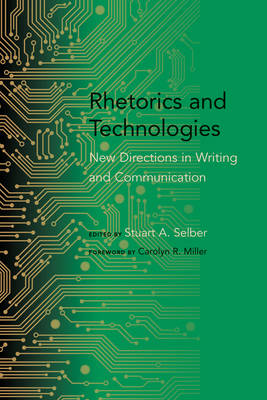
Bedankt voor het vertrouwen het afgelopen jaar! Om jou te bedanken bieden we GRATIS verzending (in België) aan op alles gedurende de hele maand januari.
- Afhalen na 1 uur in een winkel met voorraad
- In januari gratis thuislevering in België
- Ruim aanbod met 7 miljoen producten
Bedankt voor het vertrouwen het afgelopen jaar! Om jou te bedanken bieden we GRATIS verzending (in België) aan op alles gedurende de hele maand januari.
- Afhalen na 1 uur in een winkel met voorraad
- In januari gratis thuislevering in België
- Ruim aanbod met 7 miljoen producten
Zoeken
Rhetorics and Technologies
New Directions in Writing and Communication
€ 42,95
+ 85 punten
Omschrijving
Recognizing an increasingly technological context for rhetorical activity, the thirteen contributors to this volume illuminate the challenges and opportunities inherent in successfully navigating intersections between rhetoric and technology in existing and emergent literacy practices. Edited by Stuart A. Selber, Rhetorics and Technologies positions technology as an inevitable aspect of the rhetorical situation and as a potent force in writing and communication activities. Taking a broad approach, this volume is not limited to discussion of particular technological systems (such as new media or wikis) or rhetorical contexts (such as invention or ethics). The essays instead offer a comprehensive treatment of the rhetoric-technology nexus. The book's first section considers the ways in which the social and material realities of using technology to support writing and communication activities have altered the borders and boundaries of rhetorical studies. The second section explores the discourse practices employed by users, designers, and scholars of technology when communicating in technological contexts. In the final section, projects and endeavors that illuminate the ways in which discourse activities can evolve to reflect emerging sociopolitical realties, technologies, and educational issues are examined. The resulting text bridges past and future by offering new understandings of traditional canons of rhetoric-invention, arrangement, style, memory, and delivery-as they present themselves in technological contexts without discarding the rich history of the field before the advent of these technological innovations.
Specificaties
Betrokkenen
- Uitgeverij:
Inhoud
- Aantal bladzijden:
- 248
- Taal:
- Engels
- Reeks:
Eigenschappen
- Productcode (EAN):
- 9781611173314
- Verschijningsdatum:
- 1/08/2013
- Uitvoering:
- Paperback
- Formaat:
- Trade paperback (VS)
- Afmetingen:
- 152 mm x 229 mm
- Gewicht:
- 367 g

Alleen bij Standaard Boekhandel
+ 85 punten op je klantenkaart van Standaard Boekhandel
Beoordelingen
We publiceren alleen reviews die voldoen aan de voorwaarden voor reviews. Bekijk onze voorwaarden voor reviews.








